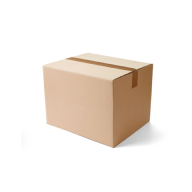Powdered fingertip textured
4.9 / 5

Product description
The product description has not been specified
The design of the wrist opening, affecting ease of putting gloves on, comfort, and how securely they stay in place during use.
The visual appearance of the glove material, ranging from basic colors to specialized options for different professional and aesthetic preferences.
Measures how far the glove extends up the wrist and forearm, determining the level of coverage and protection provided during use.
Indicates the maximum percentage of defective gloves acceptable in quality testing, with lower numbers representing higher quality standards.
Indicates how long gloves maintain their protective properties and quality when stored properly, typically measured in years from manufacture date.
The texture of the glove exterior, affecting grip strength and handling capability for different tasks and working conditions.
Describes the surface texture of the fingertip area, affecting grip strength and tactile sensitivity during use.
Defines specific design features and material properties of the gloves, such as being latex-free, touch screen compatible, or sterile.
Indicates whether gloves contain powder on the interior surface to aid donning, affecting ease of use and contamination control requirements.
The base substance used to manufacture the glove, affecting chemical resistance, durability, flexibility, and compatibility with specific applications.
About Disposable Nitrile Gloves
Disposable Nitrile Gloves provide latex-free hand protection with superior chemical and puncture resistance. These single-use gloves offer excellent tactile sensitivity and a secure fit, making them ideal for healthcare, food service, cleaning, and industrial applications where hygiene and safety are essential.
Standards and labels
Gloves with the EN ISO 374-1:2016 rating are tested for resistance against dangerous chemicals and microorganisms, including penetration, permeation, and degradation. This means you can choose gloves designed to protect your hands from specific chemical hazards, ensuring safer use in various tasks.
Single-use medical gloves with the EN 455-4:2009 rating are tested for their shelf life, ensuring they maintain properties like strength and barrier integrity over time. This means the gloves will remain effective and safe, providing reliable protection against infections until their expiration date when stored correctly.
Medical devices with the ISO 15223-1:2021 rating are tested for consistent and universally understood symbols used on their labels, packaging, and accompanying information. This means you can quickly understand critical information about the product's safe use, handling, and storage, regardless of language.
Medical devices with the EN 1041:2008+A1:2013 rating are tested for the adequacy and clarity of information supplied by the manufacturer. This ensures you receive clear, complete, and understandable instructions for safe and effective use, helping you operate the device correctly and safely.
Protective gloves with the EN 420:2003+A1:2009 rating are tested for general design, safe materials (innocuousness), water penetration, comfort, and dexterity. This ensures the gloves are safe, fit correctly, and allow you to perform tasks effectively without discomfort.
Protective clothing, gloves, and footwear materials with the EN 16523-1:2015+A1:2018 rating are tested for resistance to permeation by hazardous liquid chemicals. This means the material provides a measured level of protection against chemicals passing through it, helping you choose safety gear that resists liquid chemical exposure.
Test results
This product’s material is tested for resistance against breakthrough from potentially hazardous liquid chemicals. It measures the time it takes for a chemical to move through the material, ensuring protection during continuous contact.
Protective gloves with the EN ISO 374-2:2019 rating are tested for their resistance to penetration by dangerous chemicals and micro-organisms. This standard checks for leaks, holes, or imperfections, ensuring the gloves form an effective barrier to keep hazardous substances from reaching your skin.
Gloves with the EN 374-5:2016 rating are tested for resistance to penetration by bacteria and fungi, and potentially viruses. This means the gloves provide a protective barrier against microorganisms, helping to keep your hands safe from harmful biological agents.
Test results
This product protects you from bacteria and fungi. It passed leakage tests, making it a reliable barrier when handling materials where these micro-organisms are a risk, such as in cleaning or laboratory work.
This glove is tested to protect you from bacteria, fungi, and viruses. It provides a reliable barrier, having passed specific tests to ensure no leakage when exposed to these micro-organisms, making it suitable for handling contaminated materials.
Protective gloves with the EN 374-4:2013 rating are tested for their resistance to degradation by chemicals. This measures changes in the glove material, like swelling or hardening, ensuring the glove maintains its protective qualities when exposed to hazardous substances.
Medical gloves with the EN 455-1:2020 rating are tested for freedom from holes using a water tightness test. This ensures the gloves provide a reliable barrier, protecting you from cross-contamination and the spread of infections.
Single-use medical gloves with the EN 455-2:2015 rating are tested for physical properties like dimensions and strength. This ensures gloves fit correctly and are strong enough to provide reliable protection without tearing during use.
Medical gloves with the EN 455-3:2015 rating are tested for biological safety, including protein, endotoxin, chemical, and powder content. This ensures the gloves are safe for use, reducing risks of allergic reactions and irritation for consumers.
Food safe refers to the safety of food products that are used or consumed by people. In Europe, food safety is regulated by the European Union (EU) and the European Food Safety Authority (EFSA). These organizations set standards and requirements for food products to ensure they are safe to eat. To be considered "food safe" in Europe, a product must meet these standards and be free of harmful substances. This includes being free of harmful bacteria, pesticides, and other contaminants. Food products that do not meet these standards cannot be sold or used in the EU.
Mercator delivery terms
Free delivery for all Mercator products
34,87 €
Price per 10 packages (1 000 pcs)
3,49 € / 100 pcs
Free delivery
A carton contains 10 packages (1 000 pieces)
Other products you may like
Recently viewed
Need help?
Get help from our experts


